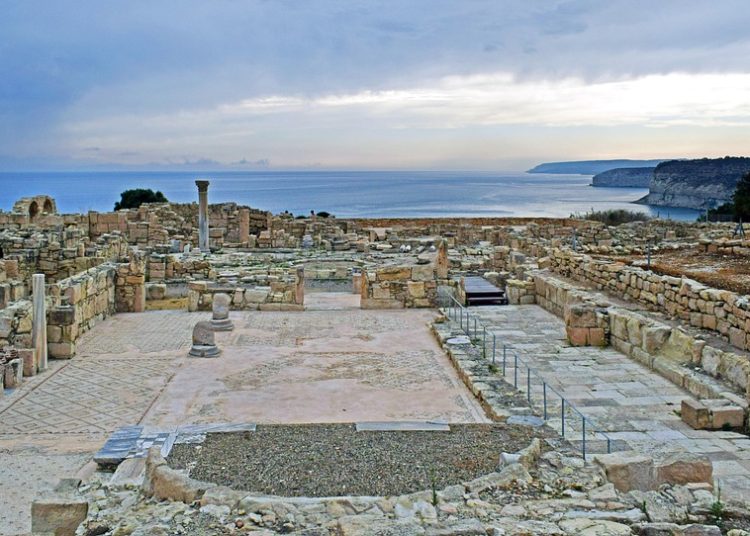Uncovering the Mysteries of Ancient India: A Journey Through Time
India, a land rich in history and culture, has always fascinated historians, archaeologists, and travelers alike. The ancient civilization of India dates back thousands of years, with evidence of human settlement found as far back as the Indus Valley Civilization, which flourished around 3300 BCE to 1300 BCE. From the majestic temples of South India to the intricate carvings of the Ajanta and Ellora caves, the country is a treasure trove of ancient wonders waiting to be explored.
In this article, we will take a journey through time to uncover the mysteries of ancient India, delving into its rich history, culture, and traditions. From the birth of Hinduism and Buddhism to the architectural marvels of the Mughal Empire, we will explore the diverse and fascinating world of ancient India.
The Birth of Hinduism and Buddhism
One of the oldest religions in the world, Hinduism has its roots in ancient India. With a history spanning over 4,000 years, Hinduism is a complex and diverse belief system that encompasses a wide range of deities, rituals, and philosophies. The Vedas, the oldest sacred texts of Hinduism, date back to around 1500 BCE and form the basis of the religion.
Buddhism, another major religion that originated in India, was founded by Siddhartha Gautama, also known as the Buddha, in the 6th century BCE. The teachings of Buddhism focus on the Four Noble Truths – the truth of suffering, the truth of the cause of suffering, the truth of the end of suffering, and the truth of the path that leads to the end of suffering. These teachings have had a profound impact on the spiritual and philosophical traditions of India and beyond.
The Indus Valley Civilization
The ancient civilization of the Indus Valley, also known as the Harappan Civilization, was one of the most advanced societies of its time. Flourishing around 3300 BCE to 1300 BCE, the Indus Valley Civilization was known for its well-planned cities, advanced drainage systems, and sophisticated trade networks. The cities of Mohenjo-Daro and Harappa are prime examples of the urban planning and architectural prowess of this ancient civilization.
The Indus Valley Civilization also had a rich artistic tradition, as evidenced by the intricate seals and pottery found at archaeological sites. The people of the Indus Valley worshipped a variety of deities, as seen in the depictions of animals and symbols on their seals. The decline of the Indus Valley Civilization around 1300 BCE remains a mystery, with theories ranging from environmental factors to invasion by outside forces.
The Mauryan Empire
One of the most powerful empires in ancient India, the Mauryan Empire was founded by Chandragupta Maurya in the 4th century BCE. Under the rule of Emperor Ashoka, the Mauryan Empire expanded to encompass most of the Indian subcontinent, promoting Buddhism and non-violence as core principles of governance. Ashoka’s rock edicts, inscribed on pillars and rocks throughout the empire, remain a testament to his commitment to promoting social welfare and religious tolerance.
The Mauryan Empire was known for its advanced administrative system, with a network of roads, postal services, and a well-organized bureaucracy. The capital city of Pataliputra, located in present-day Bihar, was a center of trade, culture, and learning during the reign of the Mauryan Empire. The decline of the Mauryan Empire in the 2nd century BCE paved the way for the rise of the Gupta Empire, known for its patronage of the arts and sciences.
The Gupta Empire
The Gupta Empire, which ruled from the 4th to the 6th century CE, is often referred to as the Golden Age of India. Under the rule of Emperor Chandragupta II, the Gupta Empire saw a flourishing of arts, literature, and science, with advances in mathematics, astronomy, and medicine. The Ajanta and Ellora caves, with their intricate carvings and paintings, are prime examples of the artistic achievements of the Gupta period.
The Gupta Empire was also known for its religious tolerance and patronage of Hinduism and Buddhism. The famous Iron Pillar of Delhi, erected during the Gupta period, stands as a testament to the metallurgical prowess of ancient India. The decline of the Gupta Empire in the 6th century CE marked the end of an era of cultural and intellectual flourishing in India.
Unraveling the Mysteries of Ancient India
As we journey through the rich tapestry of ancient India, we are confronted with a myriad of mysteries and unanswered questions. From the enigmatic ruins of the Indus Valley Civilization to the elaborate temples of Khajuraho, each site offers a glimpse into the lives of the people who once inhabited these ancient lands. The intricate carvings, sculptures, and inscriptions found at these sites provide valuable insights into the religious, social, and cultural practices of ancient India.
Archaeologists and historians continue to uncover new discoveries and insights into the ancient past of India, shedding light on the diverse and fascinating history of the subcontinent. From the maritime trade routes of the Chola Dynasty to the majestic forts and palaces of the Rajputs, each era of Indian history offers a unique perspective on the country’s rich heritage.
In conclusion, the mysteries of ancient India continue to captivate and intrigue us, offering a window into the past and a glimpse into the lives of those who came before us. By exploring the history, culture, and traditions of ancient India, we can gain a deeper appreciation for the legacy of this remarkable civilization. As we unravel the mysteries of ancient India, we embark on a journey through time, connecting with the past and gaining insights into the enduring legacy of this extraordinary land.












